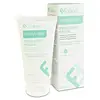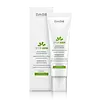What's inside
What's inside
 Key Ingredients
Key Ingredients

 Benefits
Benefits

 Concerns
Concerns

 Ingredients Side-by-side
Ingredients Side-by-side

Water
Skin ConditioningCyclopentasiloxane
EmollientPersea Gratissima Oil
Skin ConditioningDimethicone
EmollientButylene Glycol
HumectantStearoxy Dimethicone
EmollientNiacinamide
SmoothingHexylene Glycol
EmulsifyingPolysorbate 80
EmulsifyingDimethicone/Vinyl Dimethicone Crosspolymer
Skin ConditioningPropanediol
SolventSodium Carbomer
Emulsion StabilisingSalicylic Acid
MaskingIris Florentina Root Extract
MaskingArctium Majus Root Extract
Skin ConditioningFructose
HumectantGlucose
HumectantSucrose
HumectantUrea
BufferingDextrin
AbsorbentAlanine
MaskingGlutamic Acid
HumectantAspartic Acid
MaskingBiotin
AntiseborrhoeicHexyl Nicotinate
EmollientGlycerin
HumectantDimethiconol
EmollientSilica
AbrasiveZinc Sulfate
AntimicrobialRetinyl Palmitate
Skin ConditioningAscorbyl Palmitate
AntioxidantSodium Acrylate/Sodium Acryloyldimethyl Taurate Copolymer
Emulsion StabilisingAcrylates/C10-30 Alkyl Acrylate Crosspolymer
Emulsion StabilisingIsohexadecane
EmollientAlcohol
AntimicrobialBenzyl Alcohol
PerfumingParfum
MaskingBHT
AntioxidantSodium Hydroxide
BufferingSorbic Acid
PreservativeLimonene
PerfumingLinalool
PerfumingCoumarin
PerfumingGeraniol
PerfumingCitral
PerfumingWater, Cyclopentasiloxane, Persea Gratissima Oil, Dimethicone, Butylene Glycol, Stearoxy Dimethicone, Niacinamide, Hexylene Glycol, Polysorbate 80, Dimethicone/Vinyl Dimethicone Crosspolymer, Propanediol, Sodium Carbomer, Salicylic Acid, Iris Florentina Root Extract, Arctium Majus Root Extract, Fructose, Glucose, Sucrose, Urea, Dextrin, Alanine, Glutamic Acid, Aspartic Acid, Biotin, Hexyl Nicotinate, Glycerin, Dimethiconol, Silica, Zinc Sulfate, Retinyl Palmitate, Ascorbyl Palmitate, Sodium Acrylate/Sodium Acryloyldimethyl Taurate Copolymer, Acrylates/C10-30 Alkyl Acrylate Crosspolymer, Isohexadecane, Alcohol, Benzyl Alcohol, Parfum, BHT, Sodium Hydroxide, Sorbic Acid, Limonene, Linalool, Coumarin, Geraniol, Citral
Water
Skin ConditioningC12-20 Acid PEG-8 Ester
EmulsifyingNiacinamide
SmoothingGlycerin
HumectantDimethicone
EmollientDiethylhexyl Carbonate
EmollientOlus Oil
EmollientLactobacillus Ferment
Skin ConditioningCocoglycerides
EmollientSilica
AbrasiveSuccinic Acid
BufferingPotassium Azeloyl Diglycinate
Skin ConditioningPanthenol
Skin ConditioningSalicylic Acid
MaskingZinc PCA
HumectantSodium Hyaluronate
HumectantLactic Acid
BufferingSqualane
EmollientTocopheryl Acetate
AntioxidantHydrolyzed Jojoba Esters
Skin ConditioningTocopherol
AntioxidantHydroxyethyl Acrylate/Sodium Acryloyldimethyl Taurate Copolymer
Emulsion StabilisingDimethiconol
EmollientXanthan Gum
EmulsifyingParfum
MaskingEthylhexylglycerin
Skin ConditioningPolysorbate 60
EmulsifyingPentylene Glycol
Skin ConditioningSorbitan Isostearate
Emulsifying1,2-Hexanediol
Skin ConditioningCaprylyl Glycol
EmollientPantolactone
HumectantPhenoxyethanol
PreservativeSodium Hydroxide
BufferingSodium Benzoate
MaskingTetrasodium Glutamate Diacetate
Water, C12-20 Acid PEG-8 Ester, Niacinamide, Glycerin, Dimethicone, Diethylhexyl Carbonate, Olus Oil, Lactobacillus Ferment, Cocoglycerides, Silica, Succinic Acid, Potassium Azeloyl Diglycinate, Panthenol, Salicylic Acid, Zinc PCA, Sodium Hyaluronate, Lactic Acid, Squalane, Tocopheryl Acetate, Hydrolyzed Jojoba Esters, Tocopherol, Hydroxyethyl Acrylate/Sodium Acryloyldimethyl Taurate Copolymer, Dimethiconol, Xanthan Gum, Parfum, Ethylhexylglycerin, Polysorbate 60, Pentylene Glycol, Sorbitan Isostearate, 1,2-Hexanediol, Caprylyl Glycol, Pantolactone, Phenoxyethanol, Sodium Hydroxide, Sodium Benzoate, Tetrasodium Glutamate Diacetate
 Reviews
Reviews

Ingredients Explained
These ingredients are found in both products.
Ingredients higher up in an ingredient list are typically present in a larger amount.
Dimethicone is a type of synthetic silicone created from natural materials such as quartz.
What it does:
Dimethicone comes in different viscosities:
Depending on the viscosity, dimethicone has different properties.
Ingredients lists don't always show which type is used, so we recommend reaching out to the brand if you have questions about the viscosity.
This ingredient is unlikely to cause irritation because it does not get absorbed into skin. However, people with silicone allergies should be careful about using this ingredient.
Note: Dimethicone may contribute to pilling. This is because it is not oil or water soluble, so pilling may occur when layered with products. When mixed with heavy oils in a formula, the outcome is also quite greasy.
Learn more about DimethiconeDimethiconol is a silicone that resembles the popular dimethicone. Like other silicones, it is an emollient. Emollients create a thin film on skin to prevent moisture from escaping.
This ingredient helps to create a silky texture and improve spreadability. Due to its high molecular weight and thickness, it is often combined with cyclopentasiloxane.
Glycerin is already naturally found in your skin. It helps moisturize and protect your skin.
A study from 2016 found glycerin to be more effective as a humectant than AHAs and hyaluronic acid.
As a humectant, it helps the skin stay hydrated by pulling moisture to your skin. The low molecular weight of glycerin allows it to pull moisture into the deeper layers of your skin.
Hydrated skin improves your skin barrier; Your skin barrier helps protect against irritants and bacteria.
Glycerin has also been found to have antimicrobial and antiviral properties. Due to these properties, glycerin is often used in wound and burn treatments.
In cosmetics, glycerin is usually derived from plants such as soybean or palm. However, it can also be sourced from animals, such as tallow or animal fat.
This ingredient is organic, colorless, odorless, and non-toxic.
Glycerin is the name for this ingredient in American English. British English uses Glycerol/Glycerine.
Learn more about GlycerinNiacinamide is a multitasking form of vitamin B3 that strengthens the skin barrier, reduces pores and dark spots, regulates oil, and improves signs of aging.
And the best part? It's gentle and well-tolerated by most skin types, including sensitive and reactive skin.
You might have heard of "niacin flush", or the reddening of skin that causes itchiness. Niacinamide has not been found to cause this.
In very rare cases, some individuals may not be able to tolerate niacinamide at all or experience an allergic reaction to it.
If you are experiencing flaking, irritation, and dryness with this ingredient, be sure to double check all your products as this ingredient can be found in all categories of skincare.
When incorporating niacinamide into your routine, look out for concentration amounts. Typically, 5% niacinamide provides benefits such as fading dark spots. However, if you have sensitive skin, it is better to begin with a smaller concentration.
When you apply niacinamide to your skin, your body converts it into nicotinamide adenine dinucleotide (NAD). NAD is an essential coenzyme that is already found in your cells as "fuel" and powers countless biological processes.
In your skin, NAD helps repair cell damage, produce new healthy cells, support collagen production, strengthen the skin barrier, and fight environmental stressors (like UV and pollution).
Our natural NAD levels start to decline with age, leading to slower skin repair, visible aging, and a weaker skin barrier. By providing your skin niacinamide, you're recharging your skin's NAD levels. This leads to stronger, healthier, and younger looking skin.
Another name for vitamin B3 is nicotinamide. This vitamin is water-soluble and our bodies don't store it. We obtain Vitamin B3 from either food or skincare. Meat, fish, wheat, yeast, and leafy greens contain vitamin B3.
The type of niacinamide used in skincare is synthetically created.
Learn more about NiacinamideParfum is a catch-all term for an ingredient or more that is used to give a scent to products.
Also called "fragrance", this ingredient can be a blend of hundreds of chemicals or plant oils. This means every product with "fragrance" or "parfum" in the ingredients list is a different mixture.
For instance, Habanolide is a proprietary trade name for a specific aroma chemical. When used as a fragrance ingredient in cosmetics, most aroma chemicals fall under the broad labeling category of “FRAGRANCE” or “PARFUM” according to EU and US regulations.
The term 'parfum' or 'fragrance' is not regulated in many countries. In many cases, it is up to the brand to define this term.
For instance, many brands choose to label themselves as "fragrance-free" because they are not using synthetic fragrances. However, their products may still contain ingredients such as essential oils that are considered a fragrance by INCI standards.
One example is Calendula flower extract. Calendula is an essential oil that still imparts a scent or 'fragrance'.
Depending on the blend, the ingredients in the mixture can cause allergies and sensitivities on the skin. Some ingredients that are known EU allergens include linalool and citronellol.
Parfum can also be used to mask or cover an unpleasant scent.
The bottom line is: not all fragrances/parfum/ingredients are created equally. If you are worried about fragrances, we recommend taking a closer look at an ingredient. And of course, we always recommend speaking with a professional.
Learn more about ParfumSalicylic Acid (also known as beta hydroxy acid or BHA) is a well-known ingredient for treating skin that struggles with acne and clogged pores. It exfoliates both the skin's surface and deep within the pores to help clear out buildup, control oil, and reduce inflammation.
Unlike AHAs (alpha hydroxy acids), salicylic acid is oil-soluble. This allows it to penetrate into pores which makes it especially effective for treating blackheads and preventing future breakouts.
Salicylic acid is also known for its soothing properties. It has a similar structure to aspirin and can calm inflamed or irritated skin, making it a good option for acne-prone skin that is also sensitive.
Concentrations of 0.5-2% are recognized by the U.S. FDA as an over-the-counter topical acne product.
It can cause irritation and/or dryness if one's skin already has a compromised moisture barrier, so it's best to focus on repairing that before introducing this ingredient into your routine.
While salicylic acid does not increase sun sensitivity, it’s still important to wear sunscreen daily to protect your skin.
If you are looking for the ingredient called BHA or Butylated Hydroxyanisole, click here.
Learn more about Salicylic AcidSilica, also known as silicon dioxide, is a naturally occurring mineral. It is used as a fine, spherical, and porous powder in cosmetics.
Though it has exfoliant properties, the function of silica varies depending on the product.
The unique structure of silica enhances the spreadability and adds smoothness, making it a great texture enhancer.
It is also used as an active carrier, emulsifier, and mattifier due to its ability to absorb excess oil.
In some products, tiny microneedles called spicules are made from silica or hydrolyzed sponge. When you rub them in, they lightly polish away dead skin layers and enhance the penetration of active ingredients.
Learn more about SilicaSodium Hydroxide is also known as lye or caustic soda. It is used to adjust the pH of products; many ingredients require a specific pH to be effective.
In small amounts, sodium hydroxide is considered safe to use. However, large amounts may cause chemical burns due to its high alkaline.
Your skin has a natural pH and acid mantle. This acid mantle helps prevent harmful bacteria from breaking through. The acid mantle also helps keep your skin hydrated.
"Alkaline" refers to a high pH level. A low pH level would be considered acidic.
Learn more about Sodium HydroxideWater. It's the most common cosmetic ingredient of all. You'll usually see it at the top of ingredient lists, meaning that it makes up the largest part of the product.
So why is it so popular? Water most often acts as a solvent - this means that it helps dissolve other ingredients into the formulation.
You'll also recognize water as that liquid we all need to stay alive. If you see this, drink a glass of water. Stay hydrated!
Learn more about Water